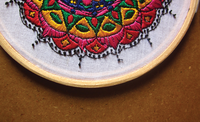
Photo by Santoshi Guruju on Unsplash
Program GUIs in Go with Fyne
Fyne Work
Creating a graphical user interface (GUI) with the Fyne framework [1] requires some preparation, including installing the GCC compiler and a graphics driver [2]. You will also need at least Go v1.12. The command
go get fyne.io/fyne/v2
downloads and sets up Fyne v2.
To get a first impression of the different Fyne widgets, you can take a look at a demo app [3] and its available controls. To download and launch this Fyne demo, enter
go get fyne.io/fyne/v2/cmd/fyne_demo fyne_demo
in the terminal.
Basic Framework
A few lines of code are all it takes to create a spartan window in Fyne (Listing 1). The import statement brings in the required packages. To create an executable program, line 9 defines the main() function as the entry point. The app.New() method creates a new Fyne instance, and the a.NewWindow("<Title>") method specifies a title for the header of the newly created program window.
Listing 1
Basic Fyne Framework
01 package main
02
03 import (
04 "fyne.io/fyne/v2"
05 "fyne.io/fyne/v2/app"
06 "fyne.io/fyne/v2/widget"
07 )
08
09 func main() {
10 a := app.New()
11 w := a.NewWindow("<Title>")
12 w.Resize(fyne.NewSize(200, 200))
13 w.SetContent(widget.NewLabel("Hello World!"))
14 w.CenterOnScreen()
15 w.ShowAndRun()
16 }
As you might expect from the last four lines, the program makes the window appear
...Buy this article as PDF
(incl. VAT)
Buy ADMIN Magazine
Subscribe to our ADMIN Newsletters
Subscribe to our Linux Newsletters
Find Linux and Open Source Jobs
Most Popular
Support Our Work
ADMIN content is made possible with support from readers like you. Please consider contributing when you've found an article to be beneficial.







